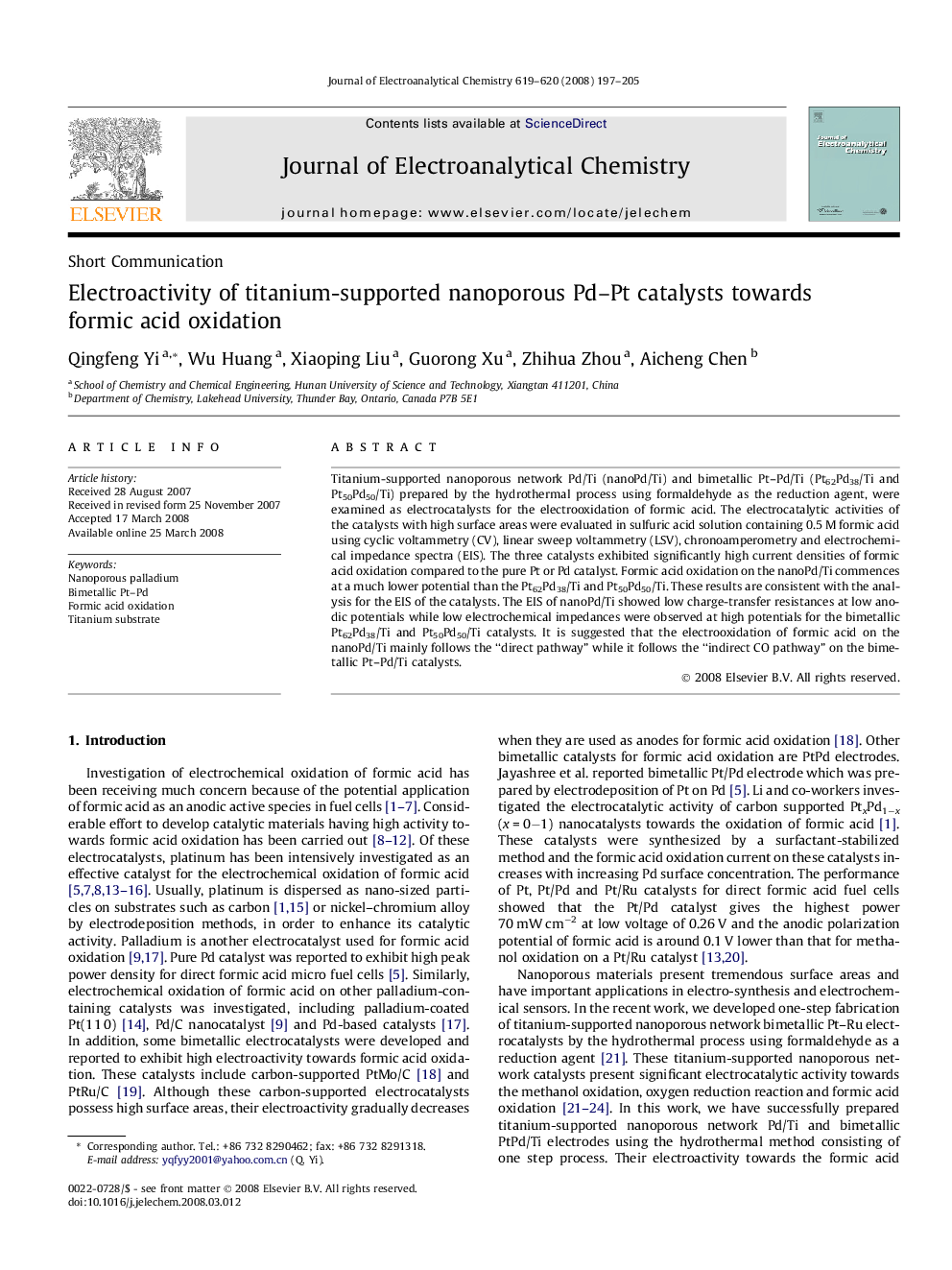| Article ID | Journal | Published Year | Pages | File Type |
|---|---|---|---|---|
| 220555 | Journal of Electroanalytical Chemistry | 2008 | 9 Pages |
Titanium-supported nanoporous network Pd/Ti (nanoPd/Ti) and bimetallic Pt–Pd/Ti (Pt62Pd38/Ti and Pt50Pd50/Ti) prepared by the hydrothermal process using formaldehyde as the reduction agent, were examined as electrocatalysts for the electrooxidation of formic acid. The electrocatalytic activities of the catalysts with high surface areas were evaluated in sulfuric acid solution containing 0.5 M formic acid using cyclic voltammetry (CV), linear sweep voltammetry (LSV), chronoamperometry and electrochemical impedance spectra (EIS). The three catalysts exhibited significantly high current densities of formic acid oxidation compared to the pure Pt or Pd catalyst. Formic acid oxidation on the nanoPd/Ti commences at a much lower potential than the Pt62Pd38/Ti and Pt50Pd50/Ti. These results are consistent with the analysis for the EIS of the catalysts. The EIS of nanoPd/Ti showed low charge-transfer resistances at low anodic potentials while low electrochemical impedances were observed at high potentials for the bimetallic Pt62Pd38/Ti and Pt50Pd50/Ti catalysts. It is suggested that the electrooxidation of formic acid on the nanoPd/Ti mainly follows the “direct pathway” while it follows the “indirect CO pathway” on the bimetallic Pt–Pd/Ti catalysts.
